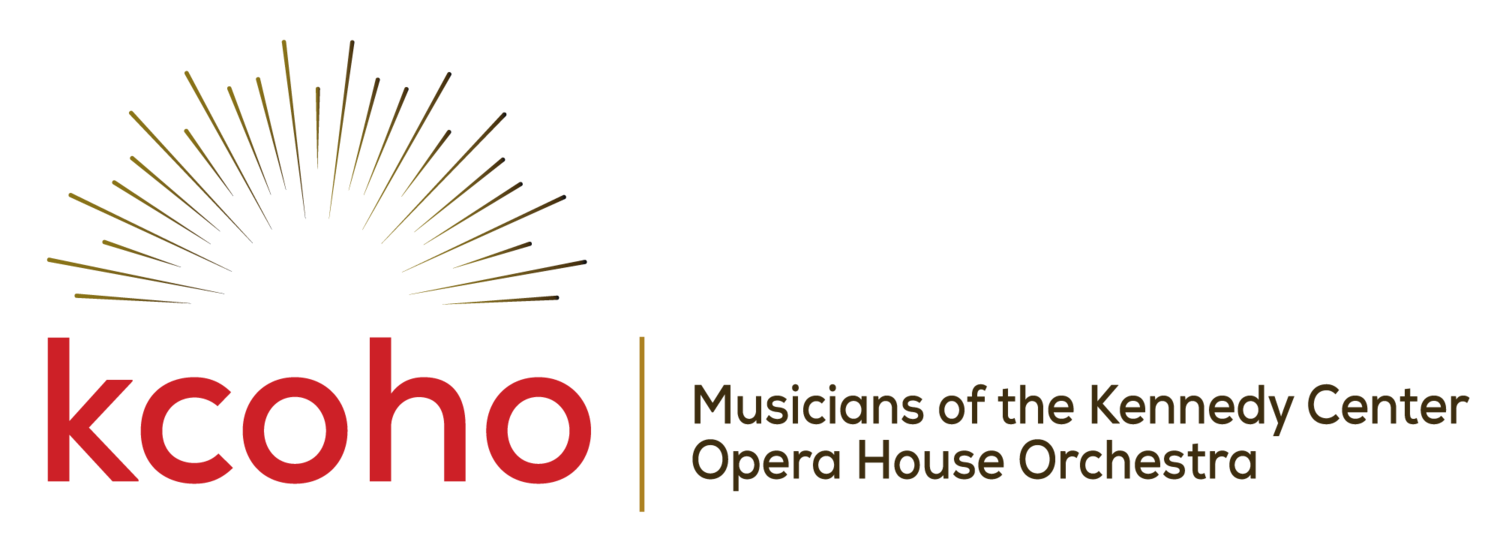Hanging Together:
Labor Dissonance and Resolution
KCOHO musicians on strike in 1993
The 80s and early 90s was a period of “growing pains,” which led to several hard-fought labor disputes. A one-day strike in 1985 resulted in a guaranteed salary from the Kennedy Center, which allowed the KCOHO to recruit and retain highly qualified players. In the fall of 1991, The Washington Opera also agreed to a guaranteed income for all members after a protracted labor dispute.
A KCOHO brass quintet performs on the Kennedy Center plaza during the 1993 strike
The last labor dispute occurred in 1993. As the Kennedy Center increased its musical show performances, there was a commensurate decrease in the number of ballet weeks. Kennedy Center President Lawrence Wilker proposed the elimination of the previously established work guarantee, effectively seeking to return the orchestra to its freelance status. Outside the building, the KCOHO and supporters picketed Phantom of the Opera; inside, the Kennedy Center provided taped accompaniment as a substitute for the live orchestra. After several weeks of national publicity, the dispute was settled. The new agreement resulted in a reduced guarantee for the KCOHO but kept the orchestra intact.
Michael Kaiser succeeded Lawrence Wilker as president in 2001 and presided over a stable period of labor relations with the orchestra during his 13-year tenure. Since 2014 the Kennedy Center has been led by Deborah Rutter, the first woman to hold this position.
While the idea of a tenured, permanent KCOHO was initially opposed by the Kennedy Center and frequently came under attack, after many years the musicians had secured health insurance, a retirement savings plan, and a guaranteed annual salary. These gains both benefit the musicians and have allowed the KCOHO to attract the finest candidates to its auditions. It is thanks to the vision and tenacity of the musicians that the orchestra was born and has become the outstanding ensemble it is today.
